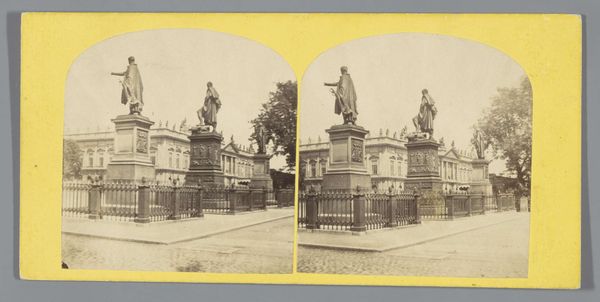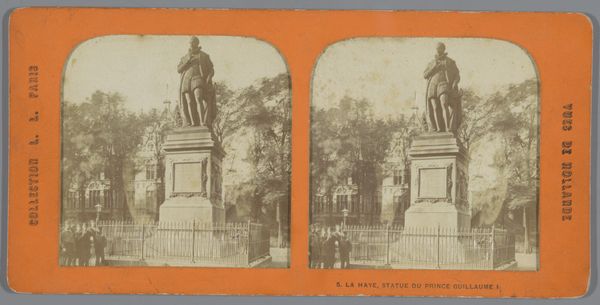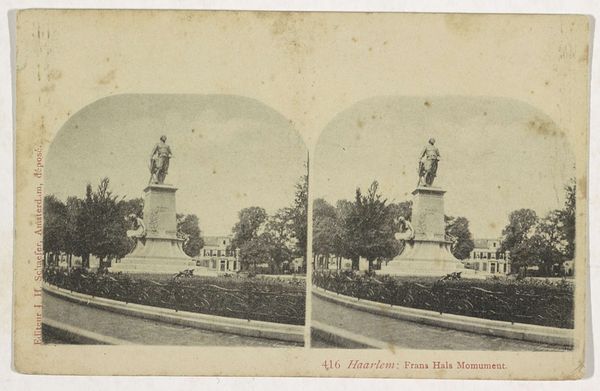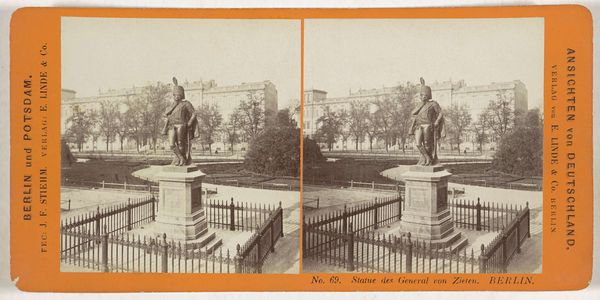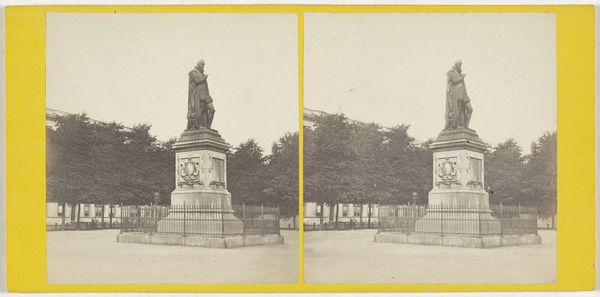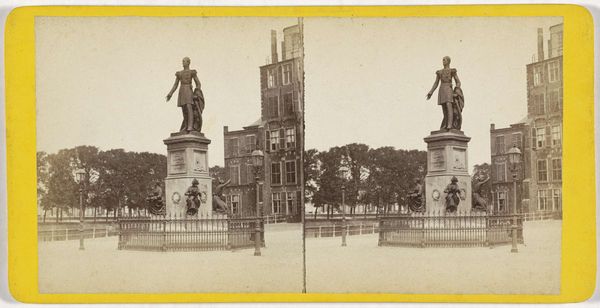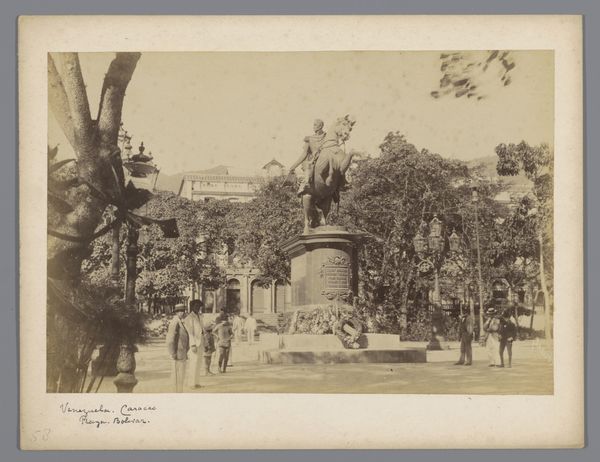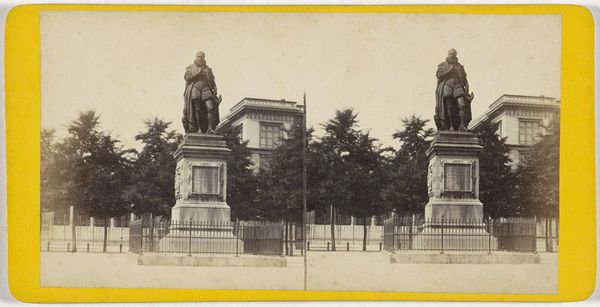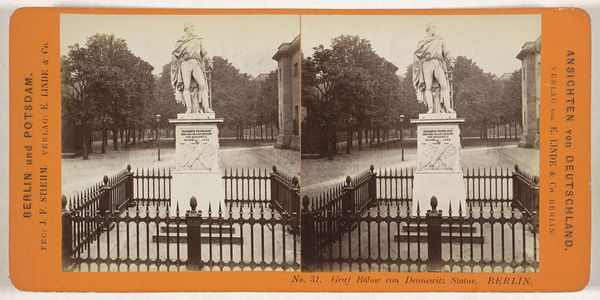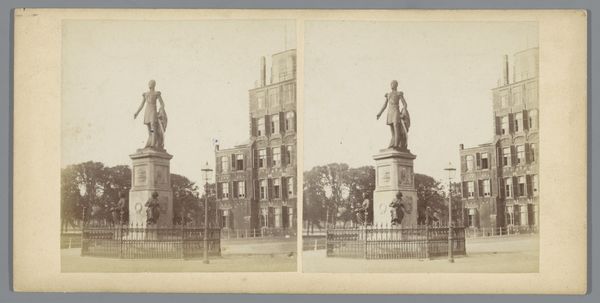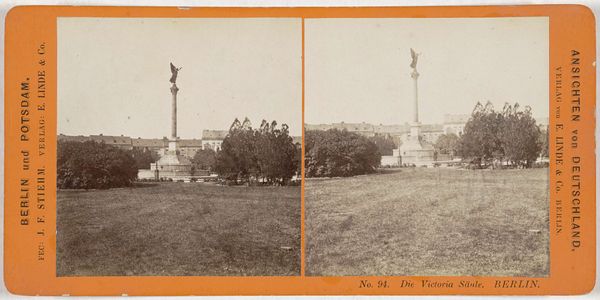
Gezicht op het standbeeld van president Brand met op de achtergrond de residentie van de Britse gouverneur in Bloemfontein, Zuid-Afrika 1901
0:00
0:00
print, photography
# print
#
landscape
#
photography
#
orientalism
#
cityscape
Dimensions: height 88 mm, width 178 mm
Copyright: Rijks Museum: Open Domain
Editor: This photograph, titled "Gezicht op het standbeeld van president Brand met op de achtergrond de residentie van de Britse gouverneur in Bloemfontein, Zuid-Afrika," was taken around 1901. It depicts a statue with a governmental building behind it, all under the British flag. I find it intriguing how the image serves a sort of documentation. What stands out to you about this image? Curator: It’s interesting how you point out the documentation aspect. I am drawn to how photography, a relatively new technology at the time, was employed to reinforce colonial power structures. Consider the labour involved – from the photographer, the developers of the photographic materials, to the distribution networks. This image, through its materials and means of production, embodies the consumption of land and resources inherent in colonial expansion. Editor: So you are less focused on the aesthetic qualities and more on how it was made and distributed? Curator: Exactly. Think about the paper it’s printed on, the chemicals used in the developing process, the logistical networks needed to circulate these images internationally. The image isn’t just *of* a colonial scene; it's *part* of the colonial apparatus. Who was consuming this image, and how did its circulation contribute to specific socio-political narratives? Editor: I never considered the materiality having such implications. It makes me see the photograph as more than just a snapshot of history. It embodies history itself! Curator: Precisely. By examining the material processes involved, we can begin to unravel the complex relationship between art, labour, and the exercise of power in the early 20th century. What narratives and biases are embedded in the materials themselves? Editor: This is very insightful! Now I realize the print’s materiality is not neutral. Thank you.
Comments
No comments
Be the first to comment and join the conversation on the ultimate creative platform.

